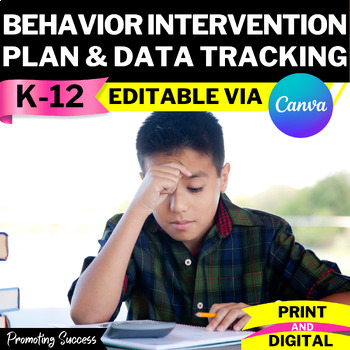Whether they have an IEP, a 504 Plan, or simply need a bit of extra support, you’re in the right place.
As educators, we want all students to succeed—and that sometimes means providing accommodations that help level the playing field. At this point in the school year, you’ve likely identified students who need those supports.
As educators, we want all students to succeed—and that sometimes means providing accommodations that help level the playing field. At this point in the school year, you’ve likely identified students who need those supports.
Understanding the Laws That Protect Our Students
Before we dive into the strategies, let’s quickly review two key laws that guide our work:- IDEA (Individuals with Disabilities Education Act) ensures students with disabilities receive a free and appropriate public education (FAPE), including specialized instruction and services.
- Section 504 of the Rehabilitation Act of 1973 protects students with disabilities in schools receiving federal funding, guaranteeing equal access through reasonable accommodations.
Real Talk from a Special Ed Teacher (That's Me)
After decades teaching everything from preschool to high school special education (and even a few years as a director), I can say this:Every student is unique. What works for one may not work for another—and that's okay.
That’s why accommodations must be:
- Taught explicitly to students
- Monitored using observable data
- Evaluated continuously to adjust what’s working (and what’s not)
- And ideally, implemented one at a time to avoid overwhelm and confusion
20 Common Accommodations for IEP & 504 Support
These ideas are easy to implement, widely supported, and proven to help students access their education:- Visual Aids – Diagrams, videos, charts, and picture schedules help students process information.
- Assistive Technology – Use speech-to-text, audiobooks, or magnifiers to meet individual needs.
- Differentiated Instruction – Offer flexible pathways: hands-on tasks, visual resources, or simplified texts.
- Collaborative Learning – Pair and group work supports engagement for students who thrive socially.
- Flexible Seating – Allow students to sit where and how they learn best.
- Extended Time – Give students the time they need for tests or assignments without pressure.
- Simplified Language – Reduce complexity in directions and instructions to promote understanding.
- Multi-Modal Instruction – Teach using visual, auditory, and kinesthetic strategies.
- Manipulatives – Physical objects help concretize abstract ideas, especially in math.
- Graphic Organizers – Mind maps, flowcharts, and Venn diagrams support sequencing and clarity.
- Vocabulary Support – Define terms using visuals and context to build comprehension.
- Modified Assignments – Tailor expectations without reducing the rigor of learning.
- Alternative Assessments – Oral responses or project-based tasks can replace traditional tests.
- Audio Books – Let students follow along and improve fluency while listening.
- One-on-One Instruction – Use small group or individual support for intensive guidance.
- Note-Taking Help – Provide guided notes, outlines, or a peer note-sharing system.
- Highlighting & Sticky Notes – Help students identify key concepts and keep track of ideas.
- Behavioral Supports – Create sensory-friendly spaces or use personalized behavior plans.
- Language Support – Use translation tools or bilingual materials when needed.
- Checklists & Schedules – Keep students organized and on task with visual or written guides.
Grab Your Free Top 20 Accommodations Checklist!
Want this list in a simple, printable format you can use right away in IEP meetings, 504 plans, or team discussions?I created a FREE Top 20 Accommodations Checklist just for you!
Use it to:
- Save time during planning
- Spark ideas in student support meetings
- Keep in your teacher binder or digital files
As a bonus, you’ll also get exclusive teaching tips, helpful tools, and secret sales delivered straight to your inbox!
Want a Done-for-You List of 175+ Accommodations?
I've compiled an exhaustive checklist of 175 accommodations used across all grade levels—from early childhood through adult education. Thousands of teachers have used it to write IEPs, support student success, and strengthen parent meetings.👉 Click here to download the full checklist in my TpT store.
Here's What Teachers Are Saying:
⭐️⭐️⭐️⭐️⭐️
"So comprehensive and helpful when thinking of the types of accommodations and modifications I can use with my students!"
⭐️⭐️⭐️⭐️⭐️
"No frills, no fluff—just a clear, easy-to-read list. A fantastic tool when creating IEPs!"
⭐️⭐️⭐️⭐️⭐️
"I used this for student teaching and plan to keep it for years. Invaluable resource!"
⭐️⭐️⭐️⭐️⭐️
"So comprehensive and helpful when thinking of the types of accommodations and modifications I can use with my students!"
⭐️⭐️⭐️⭐️⭐️
"No frills, no fluff—just a clear, easy-to-read list. A fantastic tool when creating IEPs!"
⭐️⭐️⭐️⭐️⭐️
"I used this for student teaching and plan to keep it for years. Invaluable resource!"
Also Available: Section 504 Template for Upper Elementary and Beyond
Need help documenting accommodations for students on a 504 Plan?Final Thoughts ❤️
Supporting struggling students isn’t just about following the law—it’s about believing in their potential and giving them the tools to rise.If you’re not sure where to start, or you need something specific for your caseload, feel free to message me on TpT.
Thank you so much!
❤️ Shelly Anton
Promoting Success for You and Your Students!
Shelly Anton is a participant in the Amazon Services LLC Associates Program, an affiliate advertising program designed to provide a means for sites to earn advertising fees by advertising and linking to Amazon.com. ** This means there are Amazon affiliate links in these blog posts. This does not mean you pay a dime more when you purchase a product through the link. It just means I am trying to save you valuable teacher time by making it easier for you to find valuable resources for your students, and I earn a few cents for my research and time. Thank you for all you do for kids!

.png)







No comments:
Post a Comment
Please leave a comment below. Thank you!